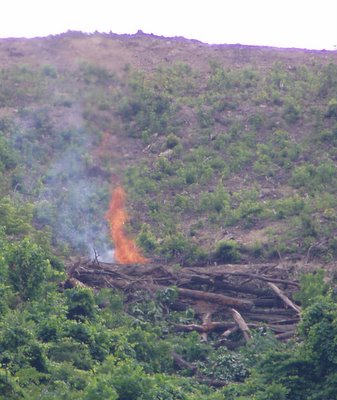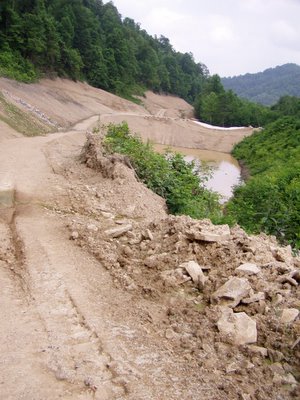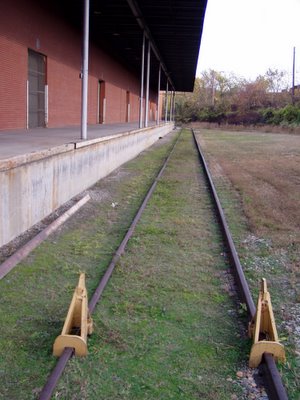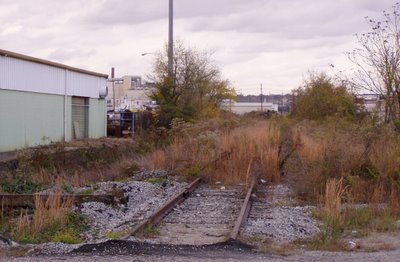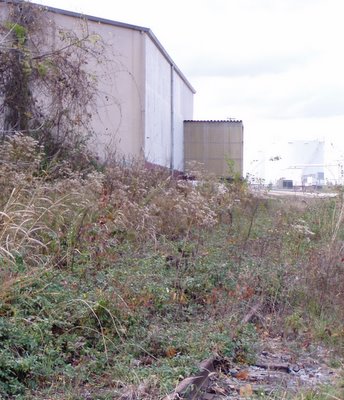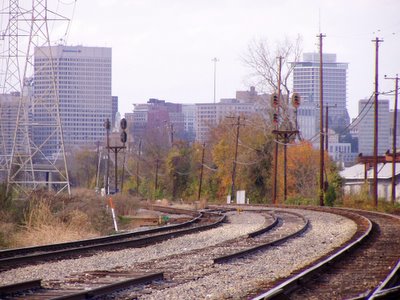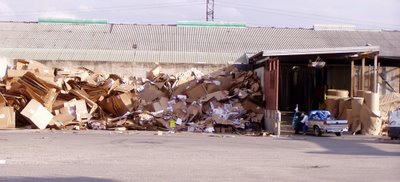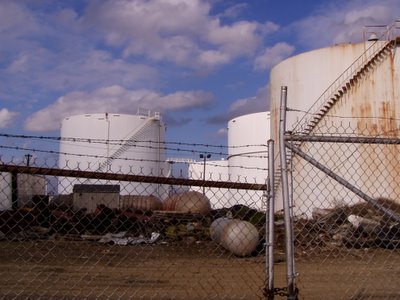The character is one of stark emptyness, both physically, and intellectually.
Virginia commonwealths art program, is, according to thier website, among the top in the nation, as evidenced by these rankings:
"In the Top Six
Virginia Commonwealth University School of the Arts' graduate programs are ranked overall sixth in the nation by U.S. News & World Report.
Sculpture M.F.A. program Ranked Number 1
Graphic Design M.F.A. program ranked No. 4
Painting and Drawing M.F.A. program ranked No. 10 "
Without a doubt, signifigant resources have been invested by the school into this renown program, prodiving undergrads and grads with an enourmous metalshop, woodshop, large studio spaces, glassblowing, jewerlymaking, and clay facilities, along with various other resources. Freshman students, in a seperate program called art foundation, have thier own building with 24 hour studio access.
Out of the over 500 Art Foundation students, on a saturday afternoon only I and a security guard were in this building. Apparantely trusting me, and with nothing else to do, here is a portrait of the student security guard:
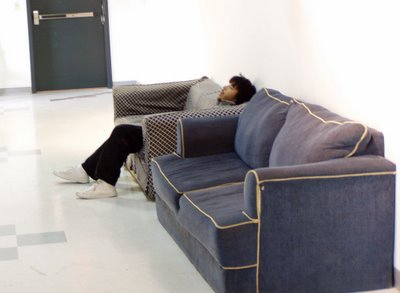
It is a comfy couch, and I would sleep on it too with his job, considering the lack of patronage, which is not the exception but the norm. The exception only happens when large and time consuming projects are due early in the week, forcing some students to use the space provided.
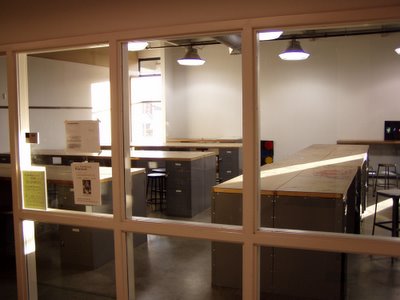
Here is one of the studio rooms we have to use, completely empty, as usual. When I was working on a 4 x 8 foot peice, this was nice, as I took up most of the room, but I would much rather actually be the central point in some sort of community of artists.

Here is the hallway of the building, lined with assigned work, the type of art you will find in this building. Every pieces meaning becomes apparant by looking at the surrounding peices, either becuase the directions for the work are actually posted next to it, or the alikeness of a hung group of artwork points to its reason for creation- to fulfill given assignment, to get good grade, to move onto next part of program, and so on. For this reason, and because any art school is product of the social and economic decay of our society, the desire to do artwork is, as shown here, nil among over 500 people who have supposedly chosen this as the focus of thier life. I have no doubt that this scene is repeated in many other places.
In considering the emptyness of this work, it is also important to note the character of the art courses- all talk is of art, with occasional references to the most banal aspects of culture. Artistic exploration of the world is shunned, while artistic exploration of the self, and of materials, is hailed. Consequently, almost all work is clearly isolated from any feeling or reality of the world, and what little does speak so does it in the simple, hackneyed, and pessimistic ways. This is trend readily shown in all forms of art, be it from "professional" artists, hollywood, novels, or music.
David Walsh, in critiquing American Beauty, describes well the character of that small fraction of art that attempts to examine society, although he is discussing filmmaking:
"The filmmakers tried to come to terms with American life and found it difficult. So they gave up half or a quarter of the way. I don't mean to pick on Ball, a playwright and former writer of situation comedies, but one isn't encouraged by his comment that “a lot of stuff in the script is really instinctive. I didn't think about what the purpose of it was, or that kind of thing.” That “kind of thing,” i.e., coherent thought, as we hardly need be reminded, is in short supply in American filmmaking circles."
"I didn't really think about what the purpose of it was, or that kind of thing" could be the slogan of the contemporary artworld. On Friday, I was present during a critique of a well crafted sculpture that placed a few select objects found in an unused warehouse inside a cabinent made out of old wood. The placement and presentation implied actual meaning behind it, such as an eerie baby doll head next to some bullets, on a bed of straw, framed by a weathered doorway that was the entrance to this lighted space. On quesitoning of the meaning of this and other juxtoposition, the artist might have actually said exactly "I didn't think about what the purpose of it was, or that kind of thing.” He proclaimed a fascination for abandoned objects, and decay in general, but alloted it to some sort of mysterious passion, instead of probing its causes. I could proclaim that same fascination, as I'm sure the photos on the site testify to, but I have actually bothered to analyze its reason- the blatant disuse and decay of the key elements to modern society, along with the widespread ignorance and disinformation to this trend, is an enourmous contradiction that cannot but provoke a fascination.
 It is a comfy couch, and I would sleep on it too with his job, considering the lack of patronage, which is not the exception but the norm. The exception only happens when large and time consuming projects are due early in the week, forcing some students to use the space provided.
It is a comfy couch, and I would sleep on it too with his job, considering the lack of patronage, which is not the exception but the norm. The exception only happens when large and time consuming projects are due early in the week, forcing some students to use the space provided. Here is one of the studio rooms we have to use, completely empty, as usual. When I was working on a 4 x 8 foot peice, this was nice, as I took up most of the room, but I would much rather actually be the central point in some sort of community of artists.
Here is one of the studio rooms we have to use, completely empty, as usual. When I was working on a 4 x 8 foot peice, this was nice, as I took up most of the room, but I would much rather actually be the central point in some sort of community of artists. Here is the hallway of the building, lined with assigned work, the type of art you will find in this building. Every pieces meaning becomes apparant by looking at the surrounding peices, either becuase the directions for the work are actually posted next to it, or the alikeness of a hung group of artwork points to its reason for creation- to fulfill given assignment, to get good grade, to move onto next part of program, and so on. For this reason, and because any art school is product of the social and economic decay of our society, the desire to do artwork is, as shown here, nil among over 500 people who have supposedly chosen this as the focus of thier life. I have no doubt that this scene is repeated in many other places.
Here is the hallway of the building, lined with assigned work, the type of art you will find in this building. Every pieces meaning becomes apparant by looking at the surrounding peices, either becuase the directions for the work are actually posted next to it, or the alikeness of a hung group of artwork points to its reason for creation- to fulfill given assignment, to get good grade, to move onto next part of program, and so on. For this reason, and because any art school is product of the social and economic decay of our society, the desire to do artwork is, as shown here, nil among over 500 people who have supposedly chosen this as the focus of thier life. I have no doubt that this scene is repeated in many other places.
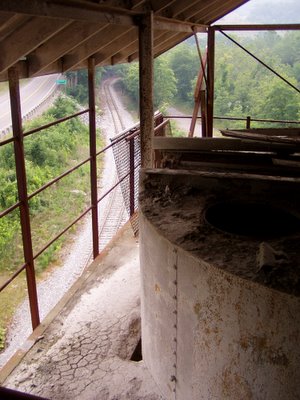
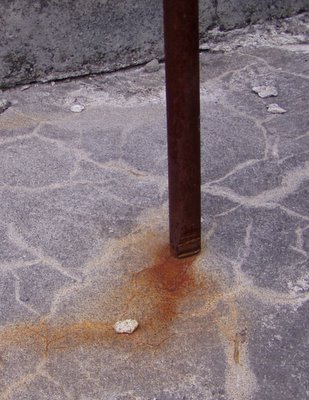
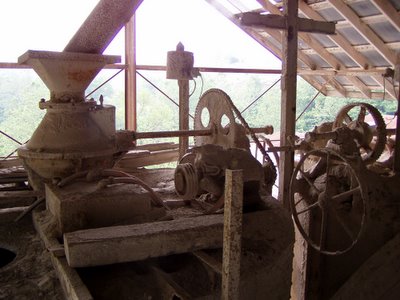





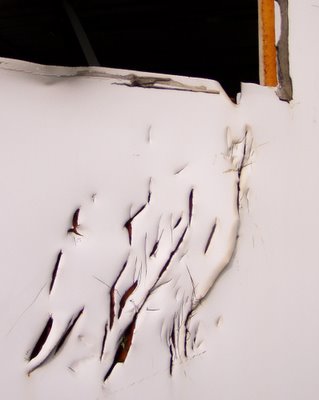

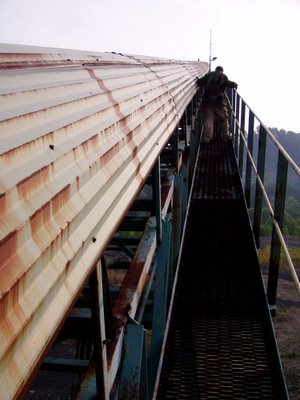
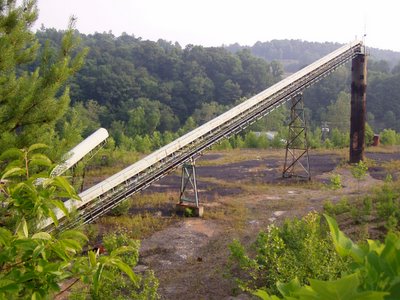
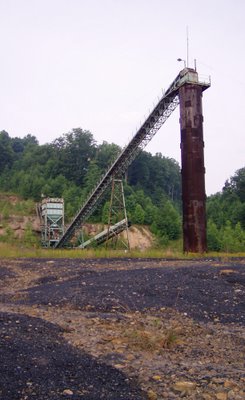

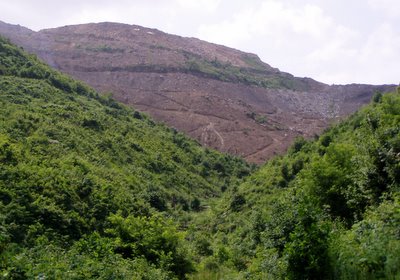
 All of the trees on this ridge were felled, but lying on the side of the mountain
All of the trees on this ridge were felled, but lying on the side of the mountain